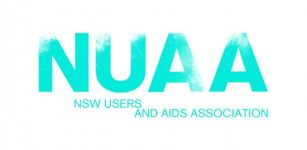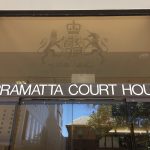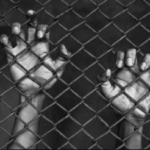Harm Minimisation and the Failed War on Drugs: An Interview with NUAA’s Yvonne Samuel

The Global Commission on Drug Policy released a report on June 2, 2011, that declared “the global war on drugs has failed.” The organisation called on governments to experiment with “models of legal regulation of drugs” to curb organised crime and improve the health of citizens.
The commission panel is made up of a group of world leaders and intellectuals that includes former UN secretary general Kofi Annan, business entrepreneur Richard Branson and former president of Mexico Ernesto Zedillo.
Their report outlined that the criminalisation of drugs and the repressive measures used to control their use and distribution have resulted in an increase in drug consumption and caused “the growth of a ‘huge criminal black market.’”
A war on people who use drugs
People who use drugs are amongst the greatest casualties of the war on drugs.
The illegality of certain substances has led to the mass incarceration of people caught in possession of them and an unregulated black market with no quality control of the products. While the stigmatisation associated with drugs, pushes their use underground and increases the harms connected with it.
One of the most horrific examples of the damage drug prohibition is causing drug users, is the war on drugs being carried out by Philippine president Rodrigo Duterte. On election, he encouraged citizens to take matters into their own hands and kill drug users themselves.
Since this tyrant assumed office on June 30 last year, more than 7,000 people have been killed.
A history of harm minimisation
Harm minimisation incorporates initiatives and programs that aim to prevent or reduce drug use related harms. Australia used to be a world leader in implementing such strategies. Since 1985, reducing the risks associated with drug use has formed the basis of the National Drug Strategy.
An illegal pilot needle and syringe program (NSP) was set up in Sydney’s Darlinghurst in 1986. This led to legalised NSPs being rolled out across the country and today, Australia has some of the lowest rates of HIV amongst people who inject drugs in the world.
In May 2001, the Uniting Medically Supervised Injecting Centre was set up in Kings Cross. The first of its kind in the English-speaking world, the centre reduced the number of ambulance call-outs to the local area by 80 percent.
However, over recent years, Australia is beginning to fall behind the rest of the world. Calls to trial pill testing at festivals are shunned by conservative politicians. While eight US states have legalised recreational marijuana and Portugal decriminalised the use of all drugs back in 2001.
Mobilised drug users
Drug user organisations have been at the forefront in initiating and continuing to deliver harm reduction strategies. Indeed, back in the mid-80s, when the push for NSPs was on, a group of local inner city drugs users was actively involved in the establishment of the program.
In 1989, this mobilised group formed the NSW Users and AIDS Association (NUAA). Today, the peak drug user organisation in NSW continues to deliver programs to improve the health of drug users and advocates for their human rights.
Sydney Criminal Lawyers® spoke with acting chief executive of NUAA Yvonne Samuel about the vital work their organisation does, and the hazardous effects of criminalising drug use.
Why is an organisation like NUAA needed? And how would you describe what you do?
NUAA came out of the HIV crisis during the 1980s and the amount of people who were dying. It was recognised that people were catching HIV who were injecting drugs. There was a documentary called Rampage that describes that time.
A group of volunteers of both people who injected drugs, and allies of people who injected drugs, mobilised and sought to get some funding. They thought they might be able to reduce the impact of HIV – which is a virus that you can prevent if you have sterile equipment – and at that time, there wasn’t sterile needle equipment.
So they started a process of trying to get sterile needle equipment available – collections, education, peer education, talking to their friends – to bring down the impact of the virus.
And since then hepatitis C – which used to be hepatitis non-A non-B – has become the bigger issue amongst people who inject drugs. And we work to provide harm reduction information.
We provide services that reduce the impact and the harms of injecting drug use, while respecting the rights of people to make decisions for themselves and recognise where they’re at. And we empower them to do things to look after their health.
Your organisation provides peer-based education and programs for people who use drugs. Just how important is it that these initiatives are peer-based?
It’s critical. There’s a whole heap of organisations out there that provide education that they’ve obtained through books. Lots of organisations. And in no way have they not got a place. They’re very important.
However, lived experience is an expert knowledge that you can’t get from books. And it’s respected within the community of people who inject drugs and use drugs – recognising people who are their own.
So when they talk harm reduction information to other people who know they’ve been there, done that, or are currently doing it, it tends to have kudos. And that allows those messages to spread.
Most information within injecting communities is peer provided to start with. What we’re doing is ensuring that the information provided is accurate – instead of myth perpetuating. We’re feeding in accurate harm reduction information and accurate information to how you connect to have your hep C treated.
It’s got to do with understanding language more than anything else. People recognise you’re part of that community. They’ll drop a sentence and you’ll both have a mutual understanding of what that comment meant. And so, it allows doorways to open and then from that for it to spread deeper into a network in a particular region.
NUAA promotes improving the health of people who use drugs through harm minimisation strategies. Can you outline the main programs you’re involved in?
We do a number of things. One of the most cost-effective strategies available is the NSP. It’s provided by a range of organisations, local health districts. We also provide a needle and syringe program.
For every needle and syringe that’s handed out the Health Department saves $4 straight up, and $12 indirectly.
So we provide that in Surry Hills. Ours is a peer run NSP. And we’re the only type in NSW that does that. We’re seeing some amazing results with lower rates of reported receptive sharing, than equivalent NSPs in our area.
We also provide peer education through the Peer Link Project, which is run in about ten different locations in NSW, and just about to start in Moree. That gets a group of people together and actually provides some harm reduction information around preventing overdose and the prevention of the transmission of blood borne viruses.
It looks at things like safer using, and how to engage and connect with services.
We have our users’ news magazine, which has been one of our hallmarks, going back for a very long time. Pretty much, the whole length that NUAA has existed, we’ve been putting out a magazine that’s written by people who use drugs for other people who use drugs. And it’s all about reducing the harms. Sharing the tips on how you can stay well. And where you can access equipment.
We’re just about to start an insiders’ news. So we’re going to be putting together one for inside the gaols. We’ve started a steering committee with Corrections, the Ministry of Health and Justice Health to work out how we can do that in a way that respects the needs of gaols.
We have something called the buddy program, which links people who have been through hepatitis C treatment – who contracted their hepatitis C more often than not from injecting drug use – to support and mentor people who are currently injecting to access and engage in hepatitis C treatment and successfully finish that.
And then they’re taught to become mentors, so that we’re spreading out the support structure.
People have been telling us that just because it’s easier than the old use of Ribavirin doesn’t mean that it doesn’t have a range of emotional impacts. And engaging with the medical profession and stuff – just having support helps them, both start it and finish it. We’re getting some good results with that.
We have been running the Outreach NSP in southwestern Sydney now for a number of years. It’s basically home delivery and pick up of used equipment.
We also have contracts with other local health districts to place peer support workers in opiate treatment settings and NSP settings to provide education around hepatitis C.
Naloxone – the drug that reverses opioid overdoses – became available over-the-counter in early 2016. What sort of impact has this had for people who use opioids? Has greater accessibility led to less deaths?
Naloxone is fantastic. More naloxone please.
Absolutely, it’s been so important. There’s been some really mixed reactions about getting access to it since the new system has been set in place, with variable prices due to the availability of the medication in chemists. There’s also been a bit of variability amongst various pharmacists as to whether they’re willing to stock naloxone.
However, where it has been available and successful it’s been linked up with – it’s very easy to administer – a very short course on what it is, how to use it and how to recognise an overdose. It’s definitely been linked to the reversal of a number of overdoses around NSW.
So we have a range of naloxone packs. We negotiate access to naloxone at this point as per a training group. And we’ve had mixed success in regions based on accessing it.
We’re just about to start a study on the efficacy of naloxone in the community in reducing overdose. And a whole heap of naloxone is going to become available for that. So I’m very much looking forward to it.
There’s a number of other agencies in the inner city that are distributing naloxone as well. And we’ve definitely seen reversals of overdose.
Hepatitis C has a huge impact on the injecting drug user community. About 90 percent of the people living with the virus in Australia are people who inject drugs. There are some new hepatitis C treatments available out on the market today.
Can you outline what they are? And what sort of results they provide for people living with the virus?
Keeping it simple. Basically, if you have hepatitis genotype 1, 2 or 3, interferon – which was the drug that you used to have to get injected weekly – is no longer needed to be given. It had massive side effects and people were very reluctant to go onto the medication in a lot of cases, because it had a reputation for being a very difficult treatment.
The new treatments take between half and less lengths of time than the old ones. So the old ones used to be six months or 50 weeks. The new ones are now either eight weeks, 12 weeks or 24 weeks. So it’s half the length of time.
The side effects are significantly less for the vast majority of people. We’re still hearing occasionally of people experiencing significant side effects. I’m not wanting to negate that, but the amount of people experiencing that has reduced radically. So under the old system with Ribavirin and the interferon it was quite a common experience.
It has over a 95 percent cure rate. It has also been made available for people who are currently using and injecting drugs if they can get a doctor who is willing to prescribe them. Because they’ve found that there is no difference for achieving SVR – SVR is the measure on whether you’re considered to be cured of hepatitis C. There’s no difference between that and somebody who is not using. The clearance rate is the same. There was a whole heap of studies done.
However, that group needs more support and that’s the reason that we have the buddy program that we do.
Life is complex. There can be a range of barriers there that you’re experiencing to get into doctors and that kind of stuff. And that’s where the buddy program comes in. They have somebody that they can talk to and mentor them and accompany them to medical appointments.
So it’s huge and it’s a game changer. However, there are people who are really sceptical. They thought they heard the same thing when the first hepatitis C medications came through. Everybody was really excited with the first medication, because there hadn’t been anything before. And they didn’t realise it was going to be that toxic. But at least it was something.
So they’ve heard all these messages and there are people who are still sceptical. But there are a lot of people going through it. And people are passing on their experiences saying, “This is doable. This is really doable.” And we’re starting to see people express interest, or at least going to find out what their current status is and exploring the possibility of going onto treatment.
It’s an exciting time, but it’s not the whole solution. Places where you don’t actually deal with hepatitis C and the NSP will bring it back into the community. Like in gaols. There’s not necessarily enough hepatitis C treatment going on there yet.
If they intend to up it, there’s programs to see it increase. There’s been barriers to that in the early stages. And I’m sure they’ll sort them out.
Hepatitis C can be recontracted, because you can catch it again. Hep C is not one that once it’s been cured that’s it. You can catch it again. So you need to provide all the prevention tools: sterile equipment and the treatment. So people don’t catch it again.
NUAA works towards improving the human rights of people who use drugs. The drug using community is highly stigmatised and marginalised. But there are some people out there in the wider community that would say people forgo their rights once they make the choice to start using drugs.
What would you say to these people? And how is NUAA working to improve the rights of drug users?
Nobody forgoes their human rights. Being human is what gives you the right to have access to human rights. That’s my response to people who say that. That’s why they’re called human rights. Not good people rights or well-behaved people rights. They’re for everybody.
We believe that all humans deserve the right to access human rights. And that we have signed, as a country, a number of those agreements internationally to say that we would continue to provide for human rights, which includes medical access for all people in Australia.
If you look at the Ottawa Charter it looks at self-empowerment within a community and the results are going to be greater if you engage the community in their own health decisions.
And so we underpin a lot of the work we do based on engaging the community who’s affected most directly in the decisions that they need in order to maximise their health outcomes. And when you maximise the health outcomes of a community who’s affected by an issue the whole community greater than themselves also benefits as a result of that.
When people are well. When people are able to function and contribute in the community. And drug use does not stop you from being able to contribute in a community if stigma and discrimination are removed. And you’re able to be consulted and included and able to manage your health issues.
Now that takes infrastructure and that’s what we’re there for. To ensure that infrastructure is in place, so people can be valuable.
And yes, the drug using community is highly stigmatised and highly marginalised, because they’re engaged in something that is considered to be illegal. And as a result, prohibition continues to stigmatise and marginalise them.
When you have a look at the LGBTI community. Thirty years ago – and much more recent than that in some places – it was illegal. And even though, the laws have changed, they’re still facing stigma and discrimination.
You stigmatise and make something illegal and the community suffers. I’m not imagining that the laws are going to change in that space anytime soon. But that doesn’t mean that they forgo their human rights.
And it should mean that they have equal access to healthcare and medical treatment. And access to rehabilitation and detoxes. And they’re supported and have access to sterile needle equipment and access to bins to dispose of that.
Your organisation is working within the current system of drug prohibition, providing measures to reduce the harms associated with drug use. Prohibition kicked off around a century ago, and the war on drugs has been going strong for over fifty years.
What’s your stance on the system of prohibition? Do you think it’s here to stay?
Do I think it’s here to stay? I don’t think I’m the one who gets to make that decision. I think that the broader Australian community will ultimately make that decision. I would say that they had prohibition against alcohol for quite some time, both in Australia and America, and it collapsed.
And they then replaced the alcohol with drugs. In actual fact, it was the same department that got renamed. They swapped over what it was that they had prohibition against.
I think we’re seeing some changes around the world. Not in Australia. But we are seeing the first changes with medical marijuana being available more widely. And even in Australia, medical marijuana is being looked at and is going to become available for people that meet the criteria.
In places in America, they’ve legalised recreational marijuana use. We’re seeing changes to the ways people are being gaoled in Europe. And some places are closing their gaols. So they’re looking at the way the prohibition system and the war on drugs is being carried out. And who is being penalised and the impacts on the community.
I think Australia is very much in the same situation it’s been in for a very long time. I don’t think there’s been a lot of movement in that space. We’re in a very conservative space around that at the moment.
As to whether that will change, I think that will depend a little bit on how much momentum the rest of the world has in this, and whether Australia engages in the debate and sees the value in that. I think they’re probably watching to see what the outcome is. Is this going to be a good outcome or a bad outcome, as per their measure?
So yes, we work within the system of prohibition. It means we have to be thoughtful about the way we provide our services. We focus primarily on health. We are a service driven organisation and our services are delivered to where it has been proven to be cost-effective to provide a health service to people who inject drugs.
The Ministry of Health is our primary funder. And we are within the Hepatitis B and Hepatitis C Strategic Plan. So we’re working on identified programs that they have found have cost benefit for the whole community in helping keep the health of people who inject drugs as best as possible.
But it can be very political at times. There are people who see that differently and don’t recognise that it is saving them health dollars – and therefore taxes – and not recognising that in actual fact that by supporting your whole community, the whole community benefits.
And that can be hard to see for some people who may listen to other media outlets.
Yes, we’re trying to improve and work on the rights of drug users within the framework that we have. We put out a book a while ago called Stories from the Otherside to raise awareness of the issues of injecting drug use within gaols.
It wasn’t a call per se for needle and syringe distribution within gaols. But it was pointing out how we were failing to provide an equitable health service to the people who are incarcerated. And yet we have a legal obligation to ensure that anybody who is incarcerated has equal access to health as anybody who’s not.
And lastly, one of the most horrifying examples of how people who used drugs can have their human rights completely desecrated is what’s happening in the Philippines right now. More than 7,000 have been killed over the last half year.
What do you think about this travesty?
Personally, I just find it absolutely and devastatingly horrific. Absolutely horrific. NUAA went and protested. We were involved in a protest against this. It was very small. And I think the greatest concern for me is how few people are outraged by this.
When there’s this many people who are dying, without due process. They’re being shot on the street. They’re having their face wrapped in masking tape so they suffocate on the street. Because somebody pointed a finger at them, without any form of trial. Without any verification. Without out any form of legal system.
It’s a way to get somebody you don’t like. It’s like a witch hunt. And there’s absolutely no evidence required. And because it’s people who are seen to be or they are saying use drugs nobody cares. The stigma of this group is so great. The discrimination against this group is so great that nobody is having an outcry about what’s happening to them.
And yet they’re just other people. If it was happening here, it could be our children. It could be our parents. It could be our friends. If it was happening in our streets – if that many people were dying, without any form of proof of crime – we would be absolutely and utterly outraged. And yet we’re so quite. It’s so quiet.
Thanks very much for taking the time out to speak with us today Yvonne.
Thank you.






